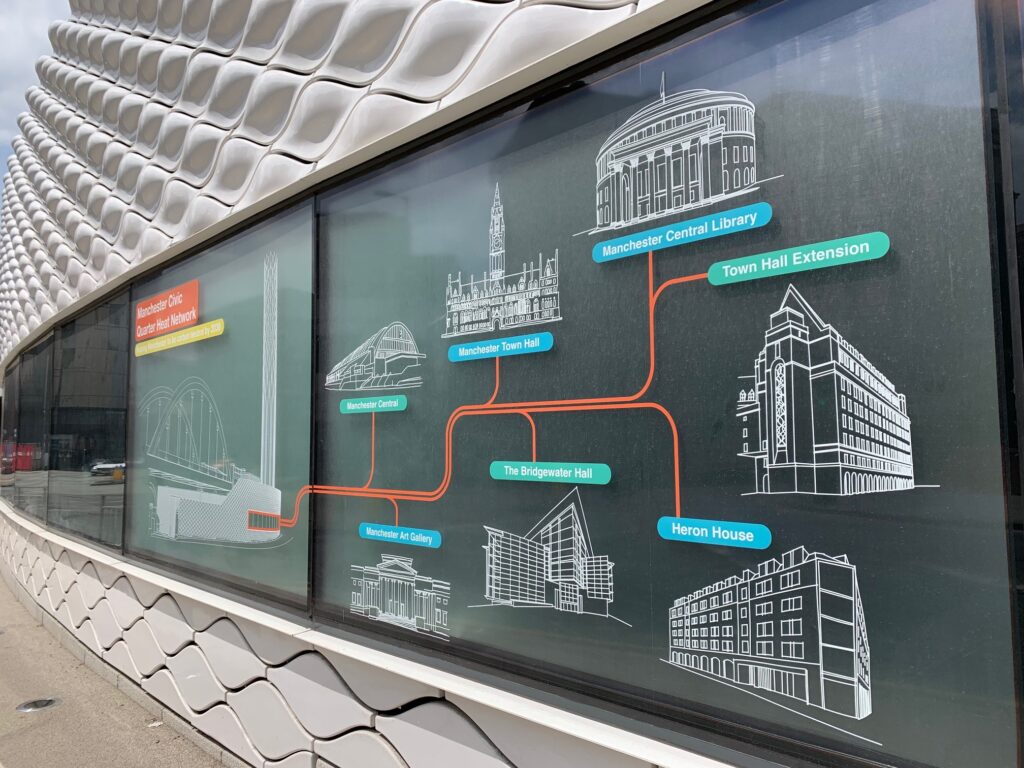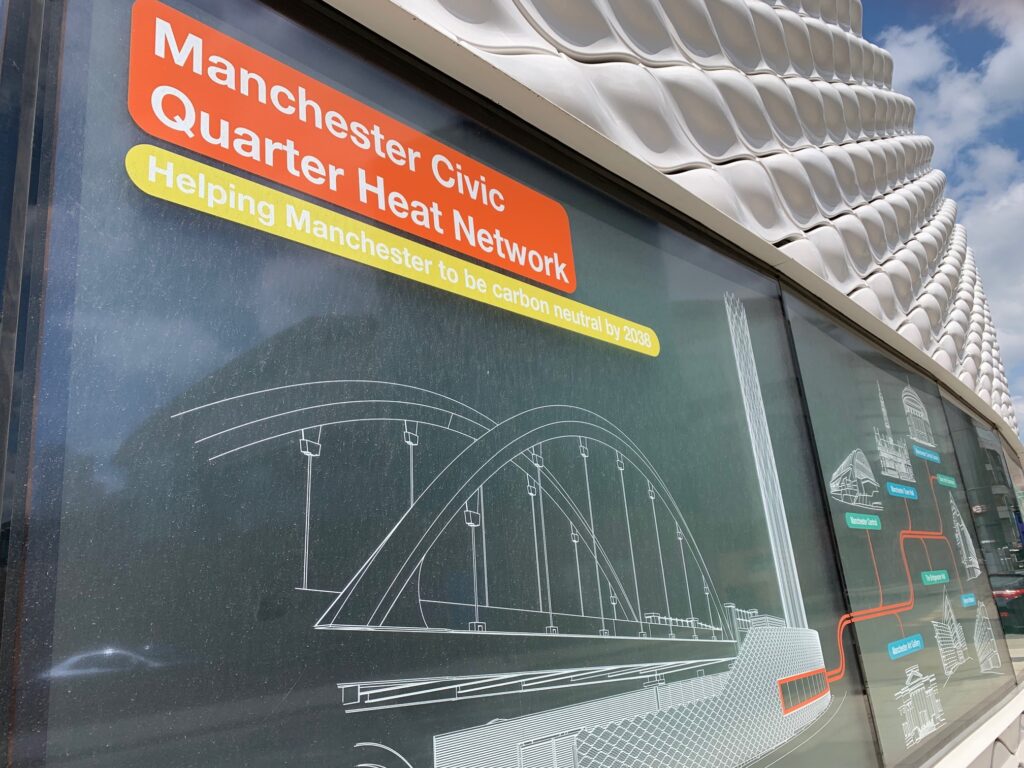In January 2022 BEIS commenced a Heat Network Zoning (HNZ) Pilot Programme in 28 English cities and towns of varying size which will run throughout 2022. Overseen and funded by BEIS, the pilot programme will inform the development of any national methodology that is introduced in the future.
What are heat networks?
A heat network – sometimes called district heating – is a distribution system of insulated pipes that takes heat from a central source and delivers it to a number of domestic or non-domestic buildings. The heat source might be a facility that provides a dedicated supply to the heat network, such as a combined heat and power plant; or heat recovered from industry and urban infrastructure, canals and rivers, or energy from waste plants.

Why are heat networks important?
Heat networks form an important part of our plan to reduce carbon and cut heating bills for customers (domestic and commercial). They are one of the most cost-effective ways of reducing carbon emissions from heating, and their efficiency and carbon-saving potential increases as they grow and connect to each other. They provide a unique opportunity to exploit larger scale – and often lower cost – renewable and recovered heat sources that otherwise cannot be used. It is estimated by the UK Climate Change Committee that around 18% of UK heat will need to come from heat networks by 2050 if the UK is to meet its carbon targets cost effectively.
Greater Manchester heat networks
District Heat Networks are already being successfully used and delivered across Greater Manchester, including the Manchester Civic Quarter, Salford MediaCityUK, St Marys Heat Network (Oldham) and the OPEN Project.
All 10 GM local authorities have undertaken feasibility studies which highlight the potential long term financial and carbon savings. There are currently in excess of 10 heat network proposals at differing stages of development and feasibility, but they definitely present a unique opportunity. The majority of the proposals are linked to planned physical developments and or creating sustainable town centres is a core feature of Greater Manchester’s investment strategy.
Our Local Area Energy Plans, one for each districts and an overarching GM plan highlight the priority areas for heat network or mini cluster low temperature heat networks.

Find out more
If you are interested in finding out more about heat network zoning, or have any queries, please visit Heat Networks Zoning Pilot or feel free to contact BEIS via hnzoning@beis.gov.uk. This will help towards realizing the ambitions of the Five Year Environment Plan for Greater Manchester which describes how we will deliver our environmental commitments, including reaching carbon neutrality by 2038



